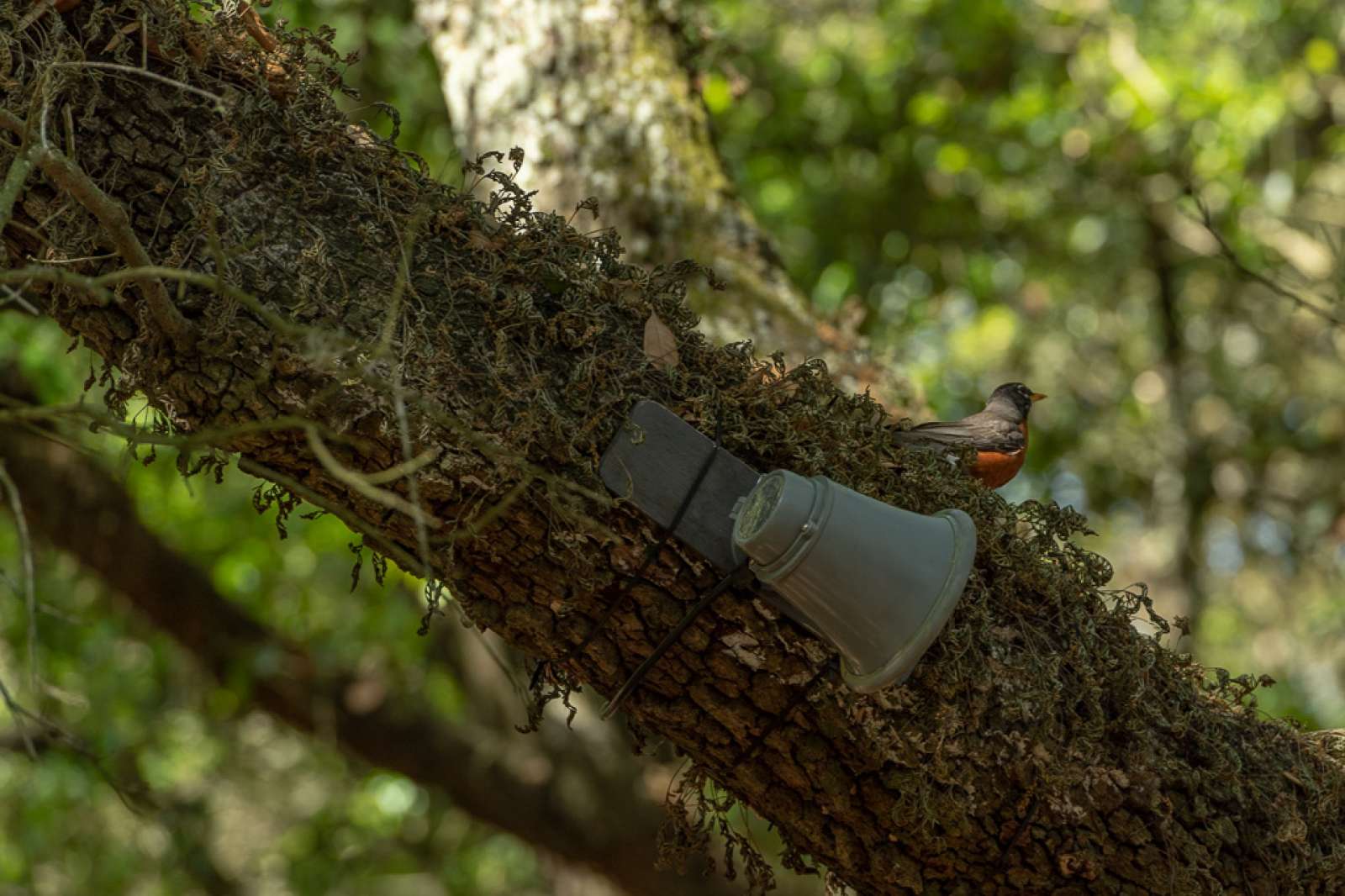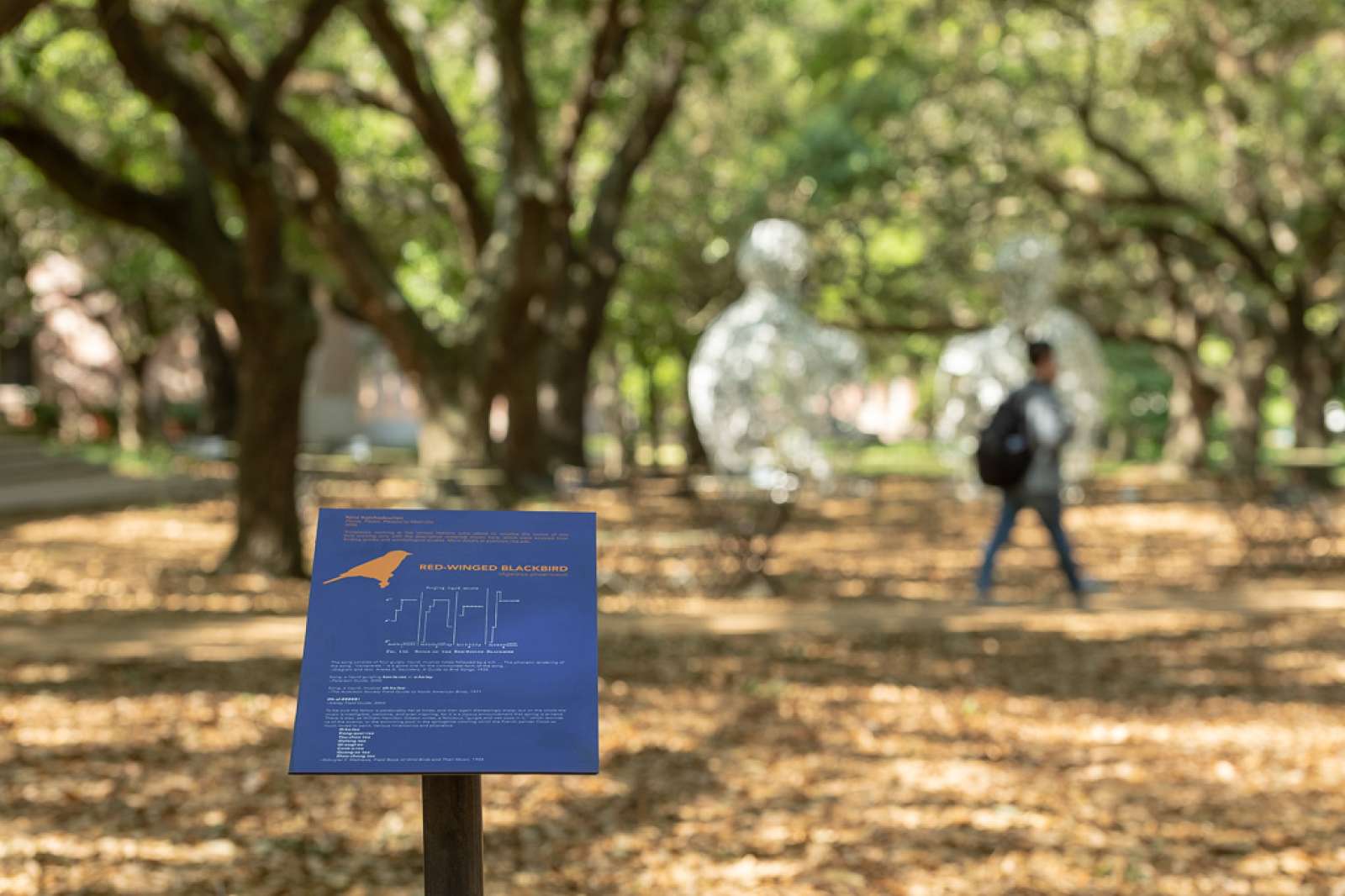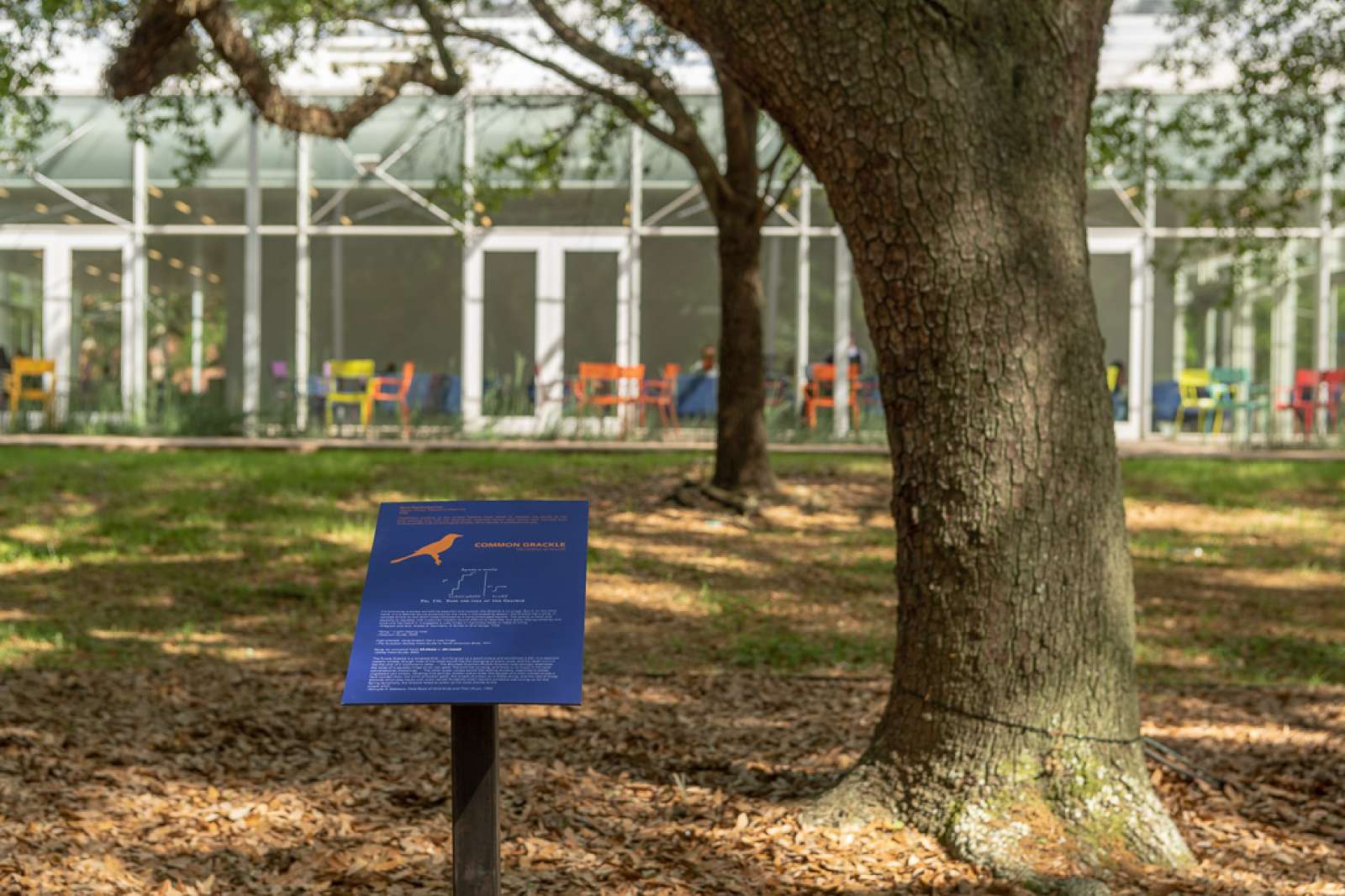Platform: Nina Katchadourian
Temporary Public Art | Commissioned by the Moody
Platform: Nina Katchadourian, Please, Please, Pleased to Meet’cha
April 1 – September 30, 2019; 10am – 5pm daily
Live Oak Grove adjacent to the Brochstein Pavilion
The second in the Moody's Platform series of temporary public art featured celebrated artist Nina Katchadourian’s outdoor sound work, Please, Please, Pleased to Meet’cha (2006) to Rice. Installed among the branches of five trees in the Live Oak grove between Herring Hall and Brochstein Pavilion, Katchadourian’s sound installation featured the voices of United Nations interpreters performing the calls of various birds. In tandem with the Moody’s spring focus on ecology and the environment, this whimsical piece invoked curiosity and questioned the limits of language, translation, and species recognition.
From the artist regarding the work’s original installation at Wave Hill in New York:
“In summer 2006, I made a sound piece that was installed in six of the trees on the grounds [of Wave Hill]. It stemmed from my interest in birdsong, which has to be one of the most elusive sounds to describe. Trying to do so stretches both our linguistic and visual descriptive systems, and poses a very unique translation problem. Please, Please, Pleased to Meet'cha consists of sound systems, installed into six trees, with human voices vocalizing birdsong. In choosing the human voices, two things became important. I wanted to work with people who knew nothing about birds. I also wanted them to have a deep engagement with translation, so I put out a "Call for Participants" to the translators and interpreters at the United Nations. None of the "voices" I worked with had previously heard the particular birds they were vocalizing. Their performances were interpretive, generative acts: spot translations that were performed without previous familiarity with the materials. A birding guide, available at each tree, reproduced the materials that the voices had worked from so that a listener could compare interpretations.”
Download descriptive materials used by the interpreters to vocalize the bird sounds here.







